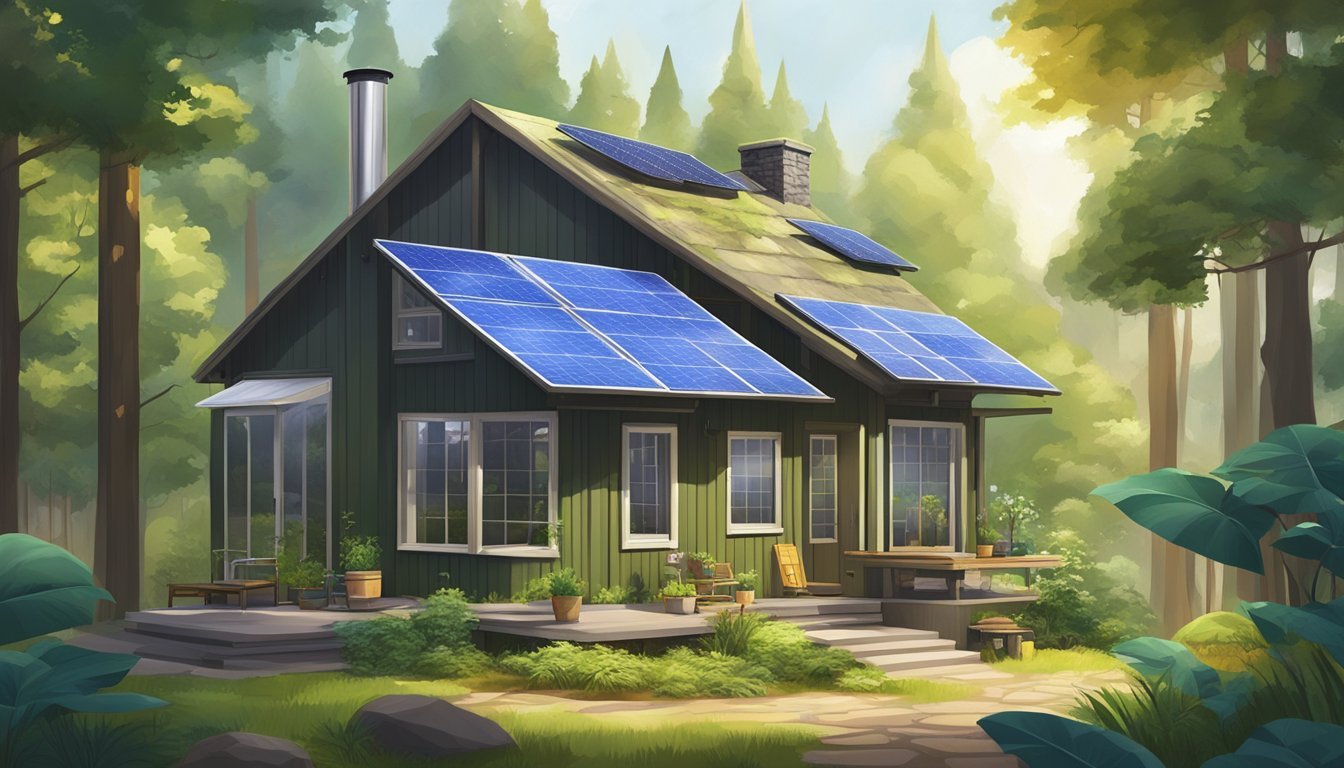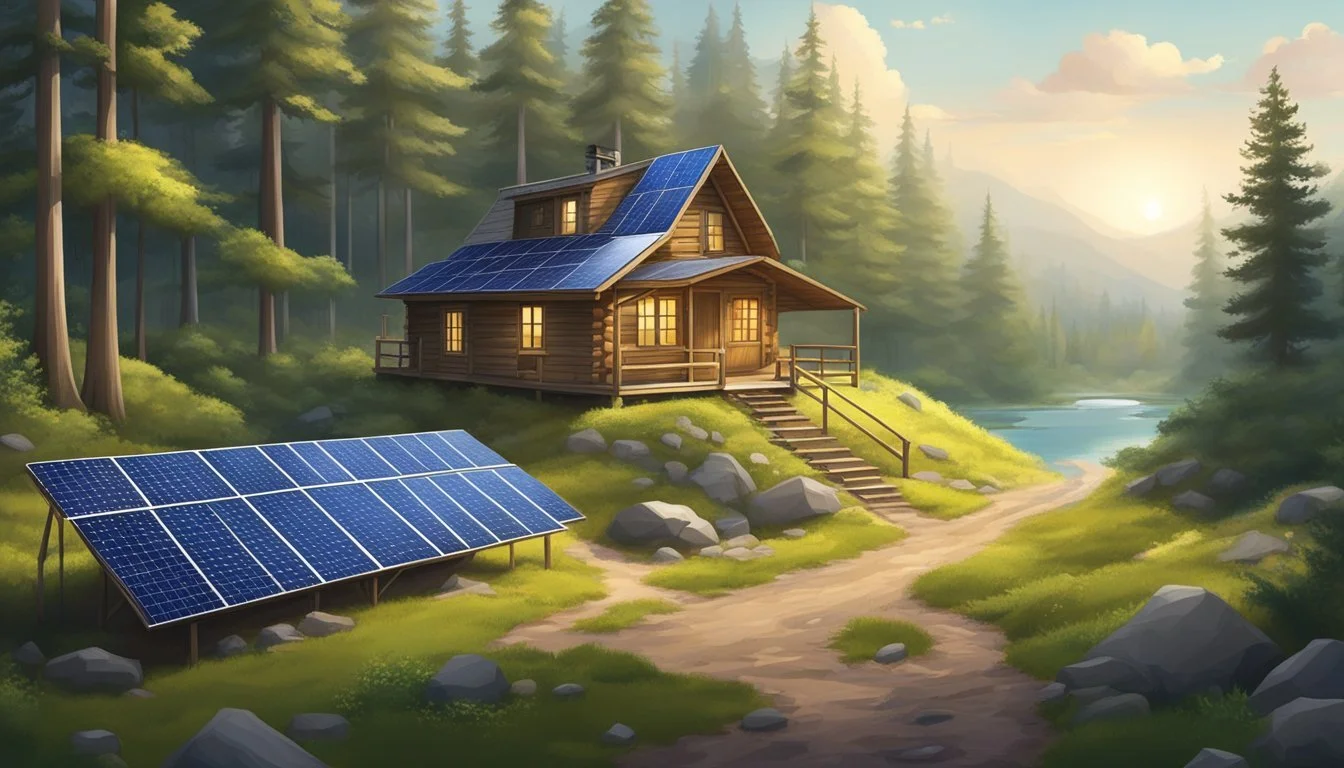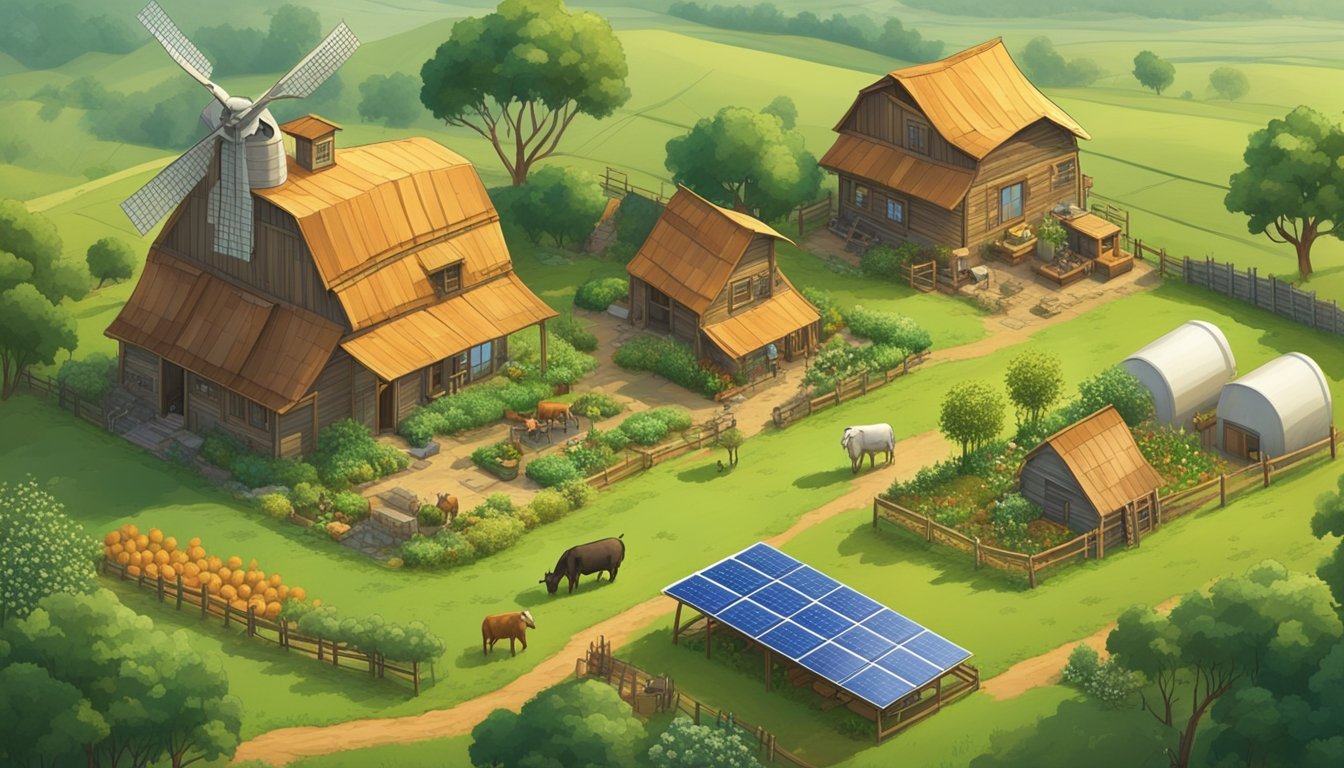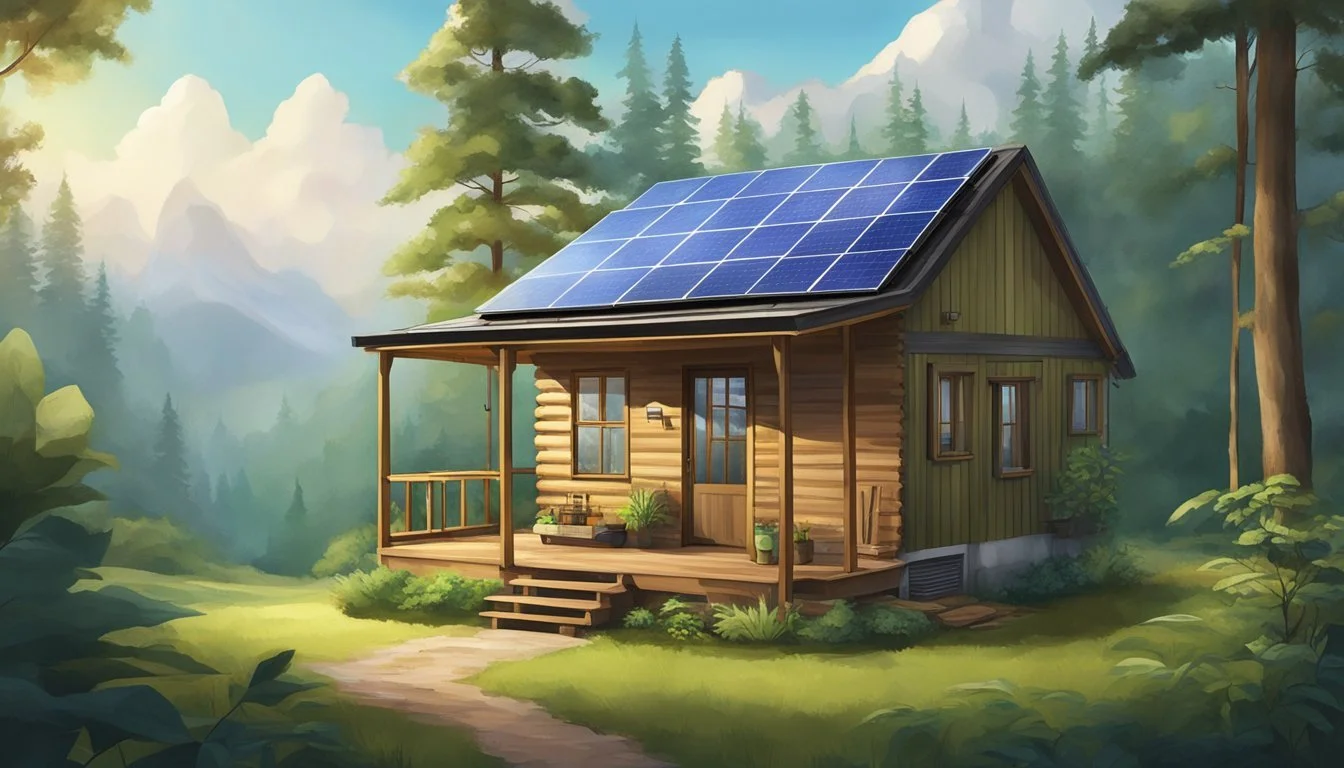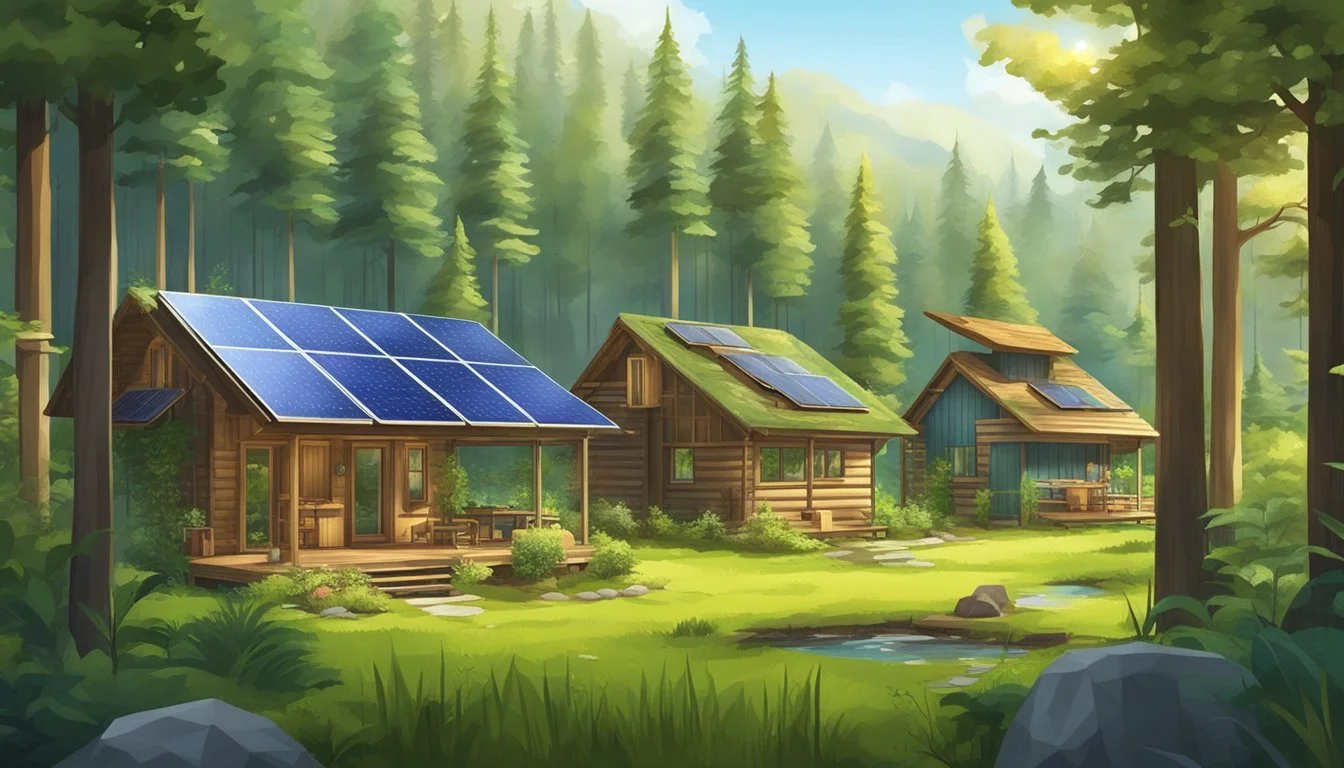Southeast Off Grid Living
Your Guide to Sustainable Independence
Southeast Off Grid Living offers a unique blend of favorable climate, rich natural resources, and affordable land prices that are ideal for self-sufficiency. Alabama, Tennessee, and Georgia stand out as prime locations with their low cost of living and lenient regulations on alternative energy and construction. Alabama, Tennessee, and Georgia are top choices due to their affordable land and supportive communities for off grid enthusiasts.
Maine, though not in the Southeast, also provides an example of a beautiful, resource-rich environment, highlighting the importance of choosing regions with abundant natural resources. Moving to states like Missouri and Texas, individuals find flexibility in building regulations coupled with a supportive environment for solar and wind energy use. This region's terrain and climate make it a viable option for those aiming to reduce their carbon footprint while thriving in a self-sustained habitat.
Communities in these states carve out sustainable paths by leveraging solar power, rainwater harvesting, and other renewable resources, demonstrating the growing trend toward off-grid living. Whether one is drawn by the potential for lower costs or the appeal of a simpler lifestyle, the Southeast provides compelling opportunities to explore living independently from conventional utility systems.
Understanding Off Grid Living
Off-grid living involves a lifestyle detached from the main utility grids, focusing on self-sufficiency and sustainability. It presents unique advantages like environmental benefits and financial freedom, alongside challenges including legal hurdles and maintenance demands.
What is Off Grid Living?
Off-grid living means disconnecting from public utilities such as electricity, water, and gas. Residents generate their own power through solar panels or wind turbines and manage water via wells, rainwater harvesting, or natural sources. This lifestyle emphasizes independence and self-sufficiency, often requiring skills in basic carpentry, agriculture, and renewable energy systems.
Advantages and Challenges
Advantages:
Environmental Impact: Reducing dependency on fossil fuels lowers the carbon footprint.
Financial Freedom: Lower utility costs and potential for reduced living expenses.
Self-Reliance: Greater control over resources and utilities.
Challenges:
Initial Investment: High upfront costs for renewable energy systems.
Maintenance and Upkeep: Regular maintenance of systems like solar panels and water purifiers.
Isolation: Potential social isolation due to remote living locations.
Weather Conditions: Dependence on weather for energy and water supply can be unpredictable.
Legal Considerations
Legal aspects vary significantly by region. It's crucial to understand local zoning laws, building codes, and utility regulations. In some areas, living off-grid may face regulatory hurdles such as restrictions on rainwater collection or requirements for septic systems. Consulting local authorities and obtaining necessary permits is essential to ensure compliance and avoid legal complications.
Lifestyle and Community
Off-grid living fosters a sense of community among like-minded individuals. Sharing resources, bartering goods, and mutual assistance are common practices. This lifestyle prioritizes simplicity, sustainability, and minimalism. Social activities might include community gardening, collaborative building projects, and educational workshops on self-sufficient practices. Emphasizing low-impact living, off-grid communities often thrive in rural or semi-rural areas where people can support one another in achieving a sustainable way of life.
By focusing on self-reliance and environmental consciousness, off-grid living offers a transformative approach to modern-day living.
Southeast Climate and Resources
The Southeast United States presents unique opportunities and challenges for those seeking an off-grid lifestyle, with its distinctive climate, abundant natural resources, and various water source options offering a blend of both advantages and considerations.
Weather Patterns
The Southeast experiences hot, humid summers with average temperatures often soaring above 90°F, particularly in areas such as Florida and southern Georgia. Climate models indicate an increase in the number of days exceeding 95°F per year.
Winters are mild, with temperatures rarely dropping below freezing except in higher elevations and northern areas. Rainfall is abundant, averaging around 50 inches annually, predominantly during summer thunderstorms and hurricanes.
Residents should prepare for the extremes of both summer heat and heavy rainfall.
Natural Resources
The region is rich in natural resources that support off-grid living. Forests provide ample wood for building and fuel, while fertile soil and a long growing season are ideal for agriculture. Coastal areas offer marine resources, including fish and shellfish.
Mineral resources such as clay, limestone, and phosphate are prevalent and can be utilized for construction and soil amendment. The diverse ecosystems support a variety of wildlife, useful for those practicing hunting and foraging.
These resources enable substantial self-sufficiency.
Water Source Options
Water availability is crucial for off-grid living. The Southeast benefits from numerous freshwater sources, including rivers, lakes, and springs. Rainwater is a reliable option due to frequent rainfall, making rainwater harvesting a practical solution.
Major rivers like the Mississippi, Tennessee, and Suwannee provide ample water for various needs. Groundwater from aquifers is accessible in many areas, though its usage can be regulated.
Efficient rainwater collection systems paired with natural water bodies secure a consistent water supply.
Property Considerations
Property considerations are essential for anyone aiming to live off-grid in the Southeast. Key factors include land acquisition costs, zoning and building codes, and assessing land for off-grid potential.
Land Acquisition Costs
Land prices in the Southeast can vary widely based on location and amenities. Coastal regions and areas near urban centers tend to have higher prices, while rural areas may offer more affordable options.
It’s crucial to consider property taxes and any additional costs such as land clearing. Cheap land may initially seem attractive but could come with hidden expenses, such as poor access or lack of utilities, which can significantly increase the overall cost of development.
Zoning and Building Codes
Zoning regulations can dictate the type of structures allowed on a property and their intended use. It's important to check local building codes to ensure compliance for residential or mixed-use off-grid setups.
Regulations can include minimum acreage requirements, setback distances from property lines, and limits on structure types. Understanding these codes helps in avoiding costly legal issues and ensuring a smooth construction process.
Assessing Land for Off-Grid Potential
When evaluating land for off-grid potential, key factors include access to natural resources like water, sunlight, and wind. The presence of a reliable water source, such as a private well or stream, is critical.
The land should also have good solar exposure if using solar panels for energy. Accessibility is another consideration; the ability to reach your property easily by road is important for transporting building materials and supplies. Assessing these aspects will aid in creating a sustainable and self-sufficient off-grid property.
Building and Infrastructure
In Southeast off grid living, constructing durable homes, managing waste efficiently, and utilizing renewable energy are crucial elements. Addressing these ensures sustainable, self-sufficient living.
Constructing Off Grid Homes
Building off-grid cabins in the Southeast requires meticulous planning. Key materials like treated wood, reclaimed lumber, and metal roofing are favored for their durability and availability. Proper insulation is imperative for managing climate variations. Water collection systems, including rainwater harvesting, are essential to ensure a steady water supply. The proximity to natural resources can significantly reduce transportation costs and ecological footprints.
Septic and Waste Management
Effective waste management is vital for off-grid living. The most common solution is installing septic systems. These systems are designed to treat household wastewater through tanks and leach fields. The soil quality and topography of the site must be assessed to determine the suitability of these systems. In areas where traditional septic systems aren’t feasible, composting toilets offer a sustainable alternative, turning waste into safe-to-handle compost.
Renewable Energy Solutions
Renewable energy is at the core of off-grid living. In the Southeast, solar power is particularly effective due to the region's ample sunlight. Solar panels can be mounted on rooftops or arrays. Wind turbines may also be viable in coastal and open areas. Battery storage systems are critical for managing energy supply, ensuring that power is available even when sunlight or wind isn't. Additionally, some residents integrate biomass or micro-hydro systems to diversify their energy sources.
Financial Aspects
When considering off-grid living in the Southeast, one must pay close attention to various financial aspects. This includes understanding the initial setup costs, ongoing expenses, budget planning, and potential ways to generate income.
Cost of Living Off the Grid
Living off the grid often requires significant upfront investment. Solar systems can range from $15,000 to $30,000, while wind turbines might cost $30,000 to $50,000.
Housing expenses also vary widely, from approximately $12,000 to $450,000. Monthly costs can range from $35 to $2,200, including energy, water, and gardening expenses. Factors like location, size, and complexity of the setup will heavily influence these costs.
Budget Planning
Effective budget planning is crucial for off-grid living. Start by listing all initial costs such as property acquisition, solar or wind power installations, and water systems.
Next, estimate monthly expenses covering food, maintenance, and utilities. Create an emergency fund for unforeseen costs like repairs or health emergencies. Budgeting tools and software can help track expenses and manage finances more efficiently.
Generating Income While Living Off Grid
Generating income while living off-grid can ensure financial stability. Options include remote work, selling produce from home gardens or farms, or utilizing skills for freelance work.
Some off-grid inhabitants also rent out cabins or offer eco-tourism activities. Identifying and leveraging marketable skills can create sustainable income streams that fit within the off-grid lifestyle. These income sources can greatly contribute to financial stability and support a self-sufficient way of life.
Agriculture and Food Supply
Living off-grid requires a sustainable approach to food production, which can include growing crops and hunting or fishing. These methods ensure a steady supply of nutrients year-round.
Growing and Harvesting Crops
In Southeastern regions, the growing season is extended due to the mild climate. Fertile land allows for the cultivation of diverse crops such as corn, beans, and vegetables.
Heirloom seeds are often preferred as they are non-GMO and hardy. These plants not only withstand local pests but also allow for seed saving. This practice ensures crop sustainability for subsequent years.
Raised bed gardens and crop rotation are effective techniques. They help maintain soil health and maximize yield. Additionally, implementing regenerative agriculture practices can enhance soil fertility, providing long-term benefits to off-grid farms.
Hunting, Fishing, and Foraging
Hunting is a valuable source of protein, with deer and wild turkey being common in these areas. Proper permits and adherence to hunting seasons are crucial for legal and sustainable hunting practices.
Fishing provides a rich source of omega-3 fatty acids and other nutrients. Species like bass and catfish thrive in local water bodies. Regular fishing ensures a continuous supply of fresh food.
Foraging for wild edibles such as berries, nuts, and mushrooms supplements the diet. Knowledge of local flora is essential to safely identify and harvest nutritious plants. These resources round out a self-sufficient off-grid food supply in the Southeast.
State-Specific Consideration
Off-grid living in the Southeastern United States offers a variety of opportunities and challenges depending on the state. Key points include the best areas for off-grid lifestyles and the specific laws affecting these choices.
Best Places for Off Grid Living in the Southeast
Alabama has several appealing areas like the Appalachian foothills. Tennessee offers options in regions such as the Cumberland Plateau. In Georgia, the Blue Ridge Mountains provide a scenic and suitable environment for off-grid enthusiasts. Florida's northern panhandle is preferred for its land availability and mild climate. South Carolina's low country and Kentucky's rural Appalachian regions both offer viable choices, with ample land and a supportive community for homesteaders.
State-Specific Laws and Opportunities
Alabama generally has fewer restrictions, making it easier to live off-grid. Tennessee allows for minimal regulation on building codes in rural areas. Georgia's water rights laws favor sustainable practices, benefiting off-grid residents. Florida requires familiarity with both state and county regulations, which can be complex. South Carolina has moderate property tax incentives for agricultural and homesteading purposes. Kentucky offers favorable laws regarding renewable energy use and water rights, supporting a smoother transition to an off-grid lifestyle.
Community and Social Dynamics
Community and social dynamics in off-grid living environments play a crucial role in sustainability and personal fulfillment, creating interconnected networks and collaborative lifestyles.
Homesteaders and Off-Grid Communities
Homesteaders in off-grid communities often form the backbone of these settlements.
They take on multiple roles, from builders to educators. Skill-sharing workshops, such as solar panel installation and organic farming, are vital. These events foster both learning and social interaction.
Off-grid communities also emphasize shared responsibilities. Tasks like constructing communal facilities or managing resources such as water and energy involve cooperative efforts. This collaboration strengthens bonds and ensures the smooth functioning of the community.
Many communities are organized into smaller neighborhoods or clusters, making it easier for members to support each other. This organizational structure helps in maintaining a balanced and harmonious environment.
Sustainability and Environment
Living off-grid in Southeast regions offers a unique connection to nature and emphasizes self-sufficient, sustainable living. This entails a conscious effort to reduce the ecological footprint, implement conservation strategies, and work harmoniously with local wildlife and ecosystems.
Ecological Footprint
Off-grid living in Southeast regions significantly reduces the ecological footprint through the use of renewable energy sources like solar and wind power. By utilizing these alternatives, communities avoid reliance on fossil fuels and decrease greenhouse gas emissions.
In addition, many off-grid homes are constructed from reclaimed or locally sourced materials, which further minimize environmental impact. Efficient use of resources, such as water conservation systems and composting toilets, also plays a key role in cutting down waste and preserving natural beauty.
Conservation Strategies
Conservation is central to off-grid living. Residents deploy various strategies to ensure that natural resources are wisely used and preserved. For example, rainwater harvesting systems help collect and store water, reducing dependence on municipal supplies.
Permaculture techniques, including crop rotation and polyculture, maintain soil health and maximize agricultural yield without synthetic fertilizers. In terms of waste management, composting organic matter allows for natural recycling, enhancing fertility and reducing landfill waste.
Wildlife and Ecosystem Interactions
The relationship between off-grid communities and local wildlife is based on mutual respect and coexistence. Off-grid homes are often situated to minimize disruption to natural habitats, preserving the region's biodiversity.
Residents can encourage native species by planting indigenous flora and creating natural barriers that promote habitat connectivity. Such practices not only support wildlife but also contribute to ecosystem health, creating a balanced environment where both humans and nature thrive together.



